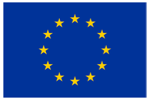GUARDIANS empowers small- and medium-sized farms through smart solutions, bridging the technological gap with larger food producers
OVERVIEW
THE CHALLENGE
We need to understand the challenges small and medium-sized farms are going through in the global market. GUARDIANS will help them to bridge the current technological gap with bigger farms through the implementation of a set of digital innovative solutions.
Integrating state-of-the-art technologies in their everyday routine, small farms’ business will be more productive and resilient and not doomed to close in the near future.
THE POTENTIAL
Small- and medium-sized farms have the power to preserve the biodiversity of their territories. These businesses are deeply rooted in their communities and in their lands, and willing to find sustainable solutions for the food production system.
THE GUARDIANS
Farmers are the main characters in our project, together with technology providers and social innovators. To truly become guardians of their territories and competitors in the global market, farmers need to master the new technological solutions provided by our project.
THE TERRITORIES
GUARDIANS’ digital solutions will be tested in four countries with a wide range of environmental, climatic, and socio-economic conditions: Spain, Italy, Sweden, and Czechia. GUARDIANS’ digital solutions cover 11 use cases, considering both crops and livestock, and will be initially refined in 4 testbeds, to be later implemented in 6 pilots, for a total of 21 farms and farm structures. Later, two calls for replicators will bring the number of farms to 95.
THE TAILORING
GUARDIANS’ digital solutions are innovative because they are tailored to the needs of small- and medium-sized farms to be cost-effective, accessible, and human-centric. GUARDIANS will support and empower the penetration, sustainability, and resilience of those sustainable agroecological farming models and practices that do not get enough recognition, like regenerative agriculture, natural grazing, alternative managed grazing strategies, and pollinators’ promotion.
To bridge the technological gap between large producers and smaller farms, GUARDIANS has designed a strategy with 6 main
OBJECTIVES
GUARDIANS WILL
Develop a set of digital solutions tailored for small- and medium-sized farms, starting from existing technologies.
Increase farmer’s acceptance rates of digital technologies and their digital maturity through a multi-actor and co-creation methodological framework.
Define a clear path towards a more sustainable, productive, and resilient agricultural business and governance model.
Foster the implementation of the one-stop-shop concept: an innovation centre that combines knowledge on existing technologies, best practices on business models and agroecological farming approaches, or financial schemes.
Valorise the environmental and social impact of new farming approaches.
Spread the provision of new digital technologies and validation use cases through a cascade funding mechanism.
GUARDIANS uses a 5 + 1-phase multi-actor co-creation
METHODOLOGY

Phase 0 – What to bring for the trip
Before taking the field, cooperatives, technology providers, and social and business innovation experts from GUARDIANS consortium will define the co-creation methodological framework and design the farmer engagement and technology acceptance package that will be used at following stages.

Phase 1 – We design together
GUARDIANS will develop a set of digital innovative solutions through a co-design process along with farmers and cooperatives to win the challenges related to: financing, management, and administrative reporting for the Common Agricultural Policies (CAP), smart farming for labour support, and environmental valorisation of agriculture and livestock activities.

Phase 2 – Let’s get started
In its second phase, GUARDIANS moves from theory to action. The digital solutions identified during the first phase will be tested in four experimental farms (testbeds):arable crops, woody crops, grassland for livestock grazing, and regenerative agriculture

Phase 3 – Take me higher
Phase 3 will take the testbed successful technologies to test them on 22 real farms: 8 in Spain, 7 in Italy, 1 in Czechia, and 6 in Sweden. First, each technology will be tested at one pilot under controlled conditions. Then, the successful solutions will be replicated in other pilots.

Phase 4 – Let’s roll
During Phase 4, the validated digital solutions will be replicated through the different multipliers that are part of GUARDIANS’ consortium: agricultural cooperatives, Digital Innovation Hubs (DIHs), and Operational Groups (OGs). The engagement and acceptance package developed in Phase 0 will ensure strong end-user engagement and successful uptake of the digital solutions.

Phase 5 – It’s time to take stock
The fifth and last phase is about evaluating GUARDIANS’ achievements, ensuring the initiative is self-sufficient and will continue to make an impact for small- and medium-sized farms without the project financing. The project’s contribution to more sustainable, productive, climate-neutral and resilient farming systems will also be evaluated.
GUARDIANS is aligned with the European Green Deal, contributing to the Farm2Fork strategy by fostering more sustainable food production, and to the Biodiversity Strategy for 2030 by preserving the high degree of biodiversity that agroecosystems should have
Impacts
The project’s main impacts are:
- Innovative solutions specifically tailored to the needs of small- and medium-sized farms and farm structures, including crop- and livestock production;
- Increased uptake of innovative digital technologies by farmers, avoiding an increased digital divide between small and large farms
- Enhanced environmental and economic performance of small- and medium-sized farms in the EU and Associate Countries.
- Development of sustainable, productive, climate-neutral, and resilient farming systems
- Provision of affordable, safe, traceable, healthy, and sustainable food for consumers
- Less pressure on ecosystems, restoring and enhancing biodiversity
- Improvements in public health
- Fairer economic returns for farmers
The project will also inform the following key European and global strategies:
- EU agricultural research & innovation to create value from land, fostering resource management actions, healthier plants and animals, and integrated ecological approaches from farm to landscape level
- FAO’s Global Action on Pollination Services for Sustainable Agriculture includes a specific digital solution for pollinators
- EU Mission: a Soil Deal for Europe preserves soil health to maintain farms productivity in the long term

